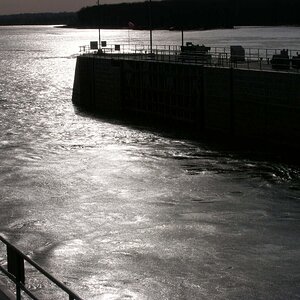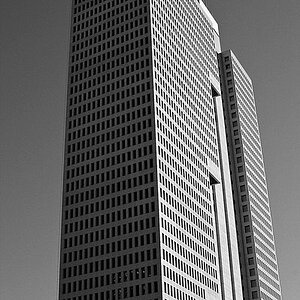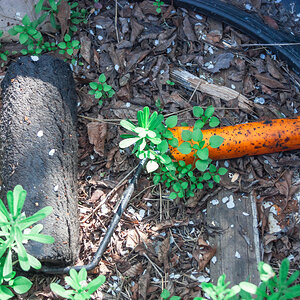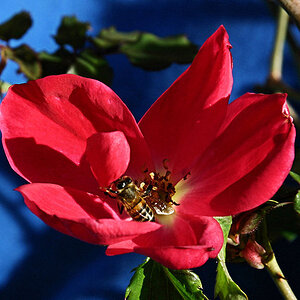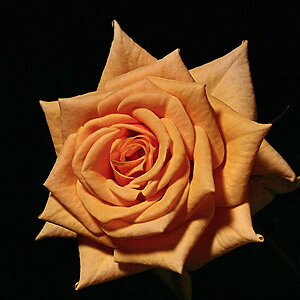- Joined
- Sep 2, 2005
- Messages
- 14,455
- Reaction score
- 3,328
- Can others edit my Photos
- Photos OK to edit
Most of the time you are taking night shots, your aperture will not affect your DOF much because you will be far enough away from your subject that your DOF will be quite deep regardless of your aperture selection.
In night photography in most circumstances (again, unless your subject is close) your aperture is going to be used mainly to control starburst formations around lights and how long you have to run your exposure to get your shot.
I will AGAIN stress that you DO NOT WANT TO UNDEREXPOSE A NIGHT SHOT. You must shoot raw and DELIBERATELY over-expose it... basically expose for the shadows. The BEST WAY to expose a night shot is to take the shot at whatever you think appropriate and check your histogram and then adjust. You want your exposure mostly in the righthand portion of your histogram, but with very little of it clipped/lost. You can then back it down in post-processing. This will reduce noise in the darker areas, increase detail in the darker areas, and give eye-popping detail in the brighter areas.
Bulb is almost NEVER necessary with night photography. More often than not, I'll shoot around F8 at 30 seconds or less with perfect results.
Example...

In night photography in most circumstances (again, unless your subject is close) your aperture is going to be used mainly to control starburst formations around lights and how long you have to run your exposure to get your shot.
I will AGAIN stress that you DO NOT WANT TO UNDEREXPOSE A NIGHT SHOT. You must shoot raw and DELIBERATELY over-expose it... basically expose for the shadows. The BEST WAY to expose a night shot is to take the shot at whatever you think appropriate and check your histogram and then adjust. You want your exposure mostly in the righthand portion of your histogram, but with very little of it clipped/lost. You can then back it down in post-processing. This will reduce noise in the darker areas, increase detail in the darker areas, and give eye-popping detail in the brighter areas.
Bulb is almost NEVER necessary with night photography. More often than not, I'll shoot around F8 at 30 seconds or less with perfect results.
Example...



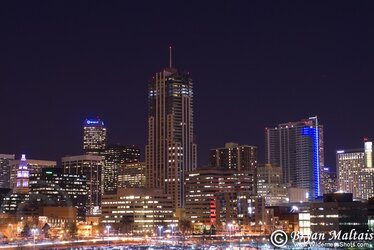
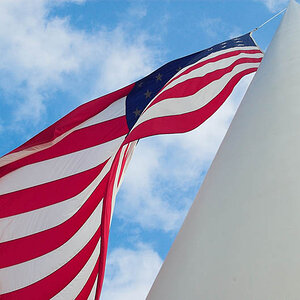
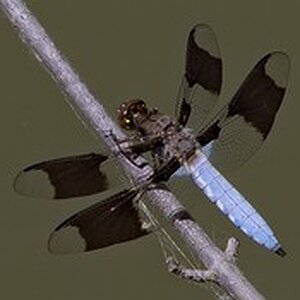
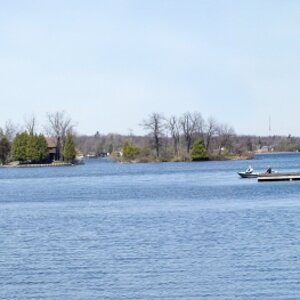
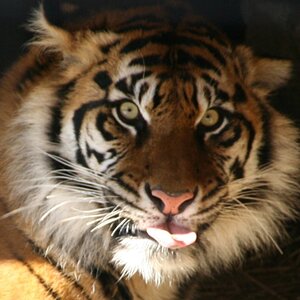
![[No title]](/data/xfmg/thumbnail/35/35223-d0fc07fee19dabe0456b4eeae54536fb.jpg?1619736957)
